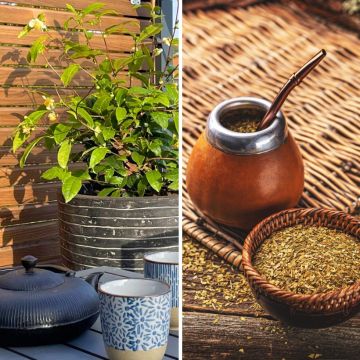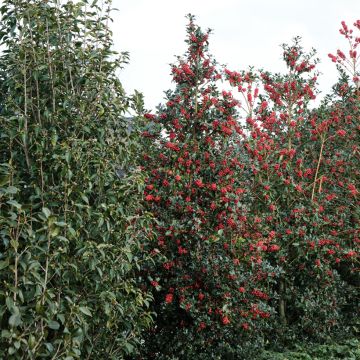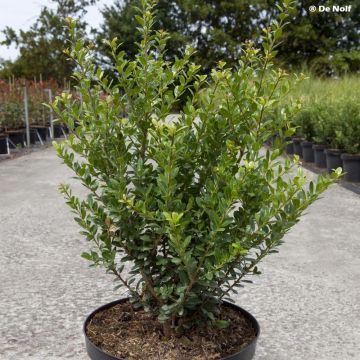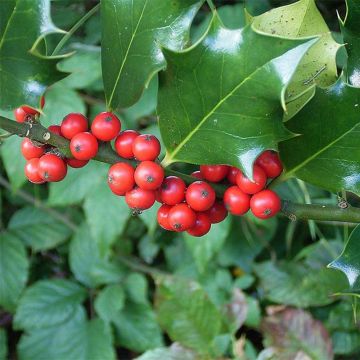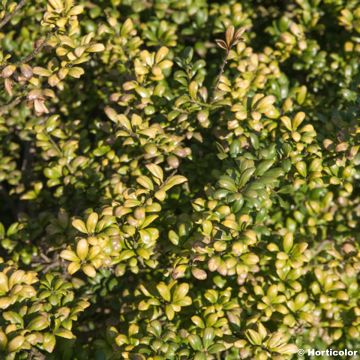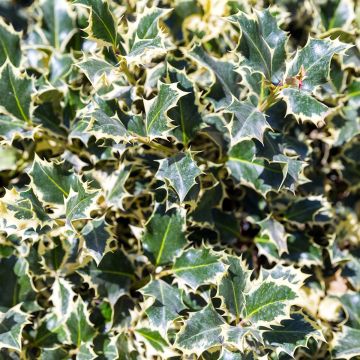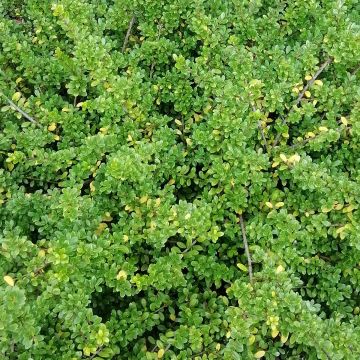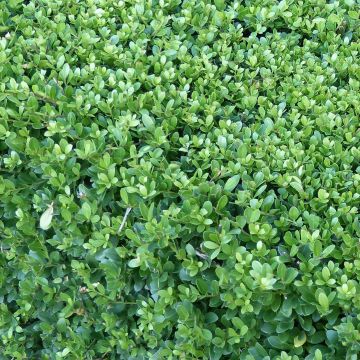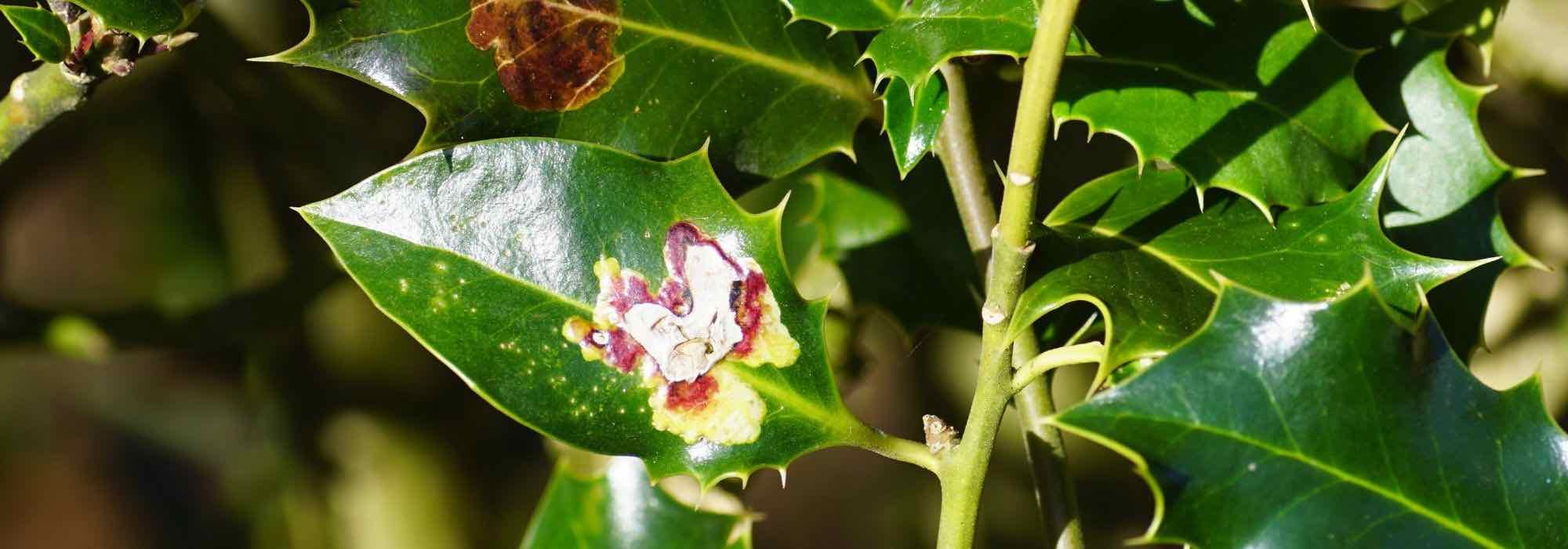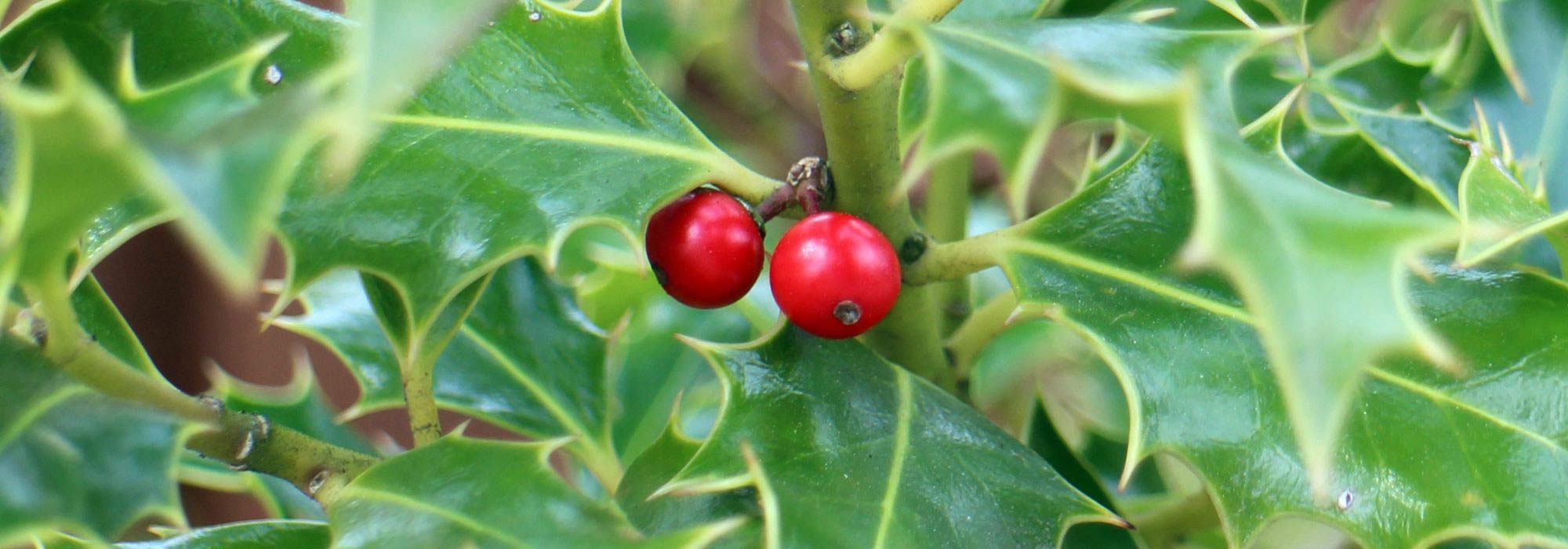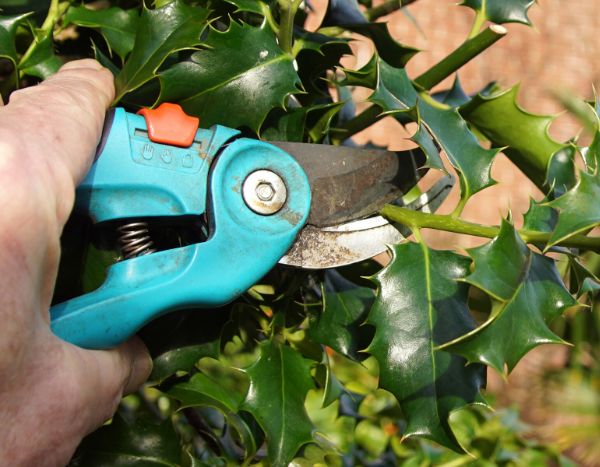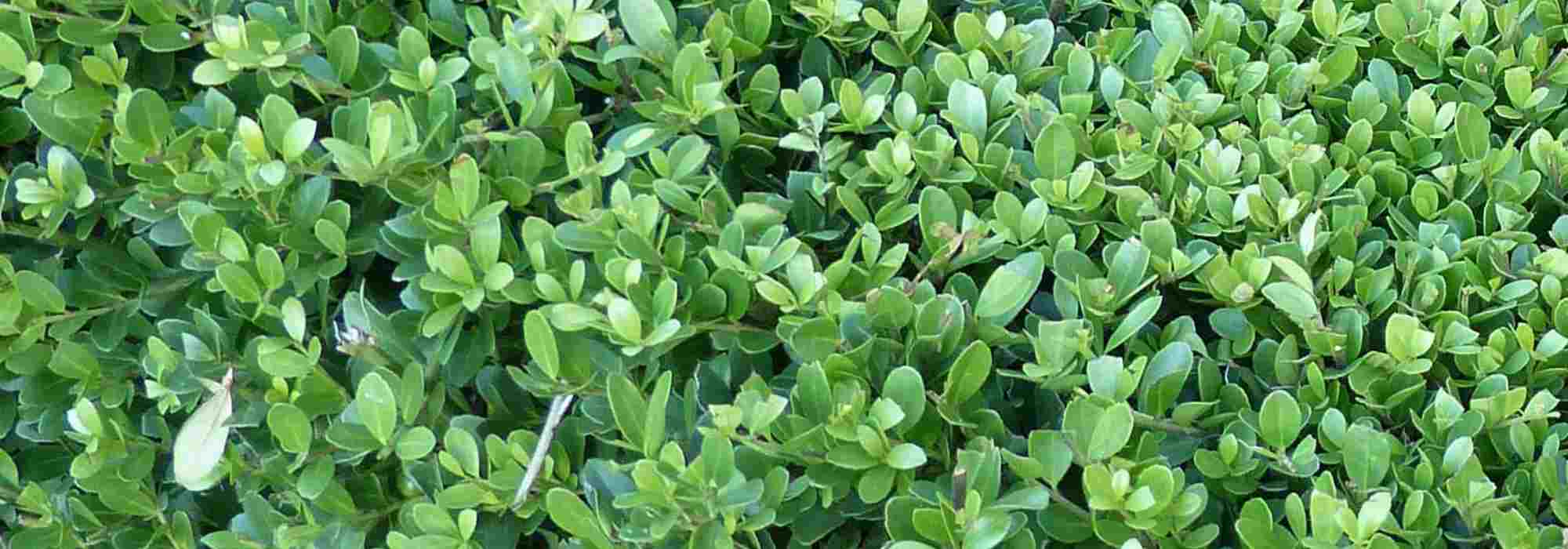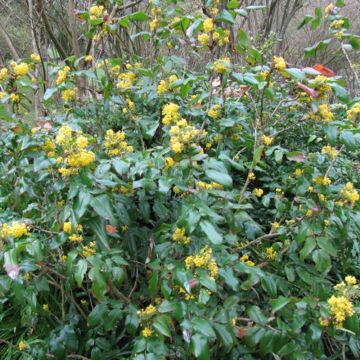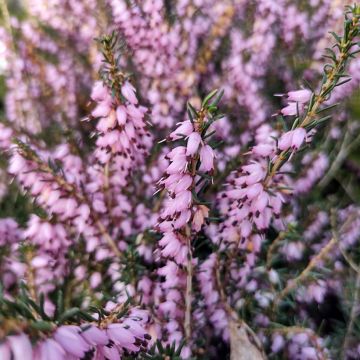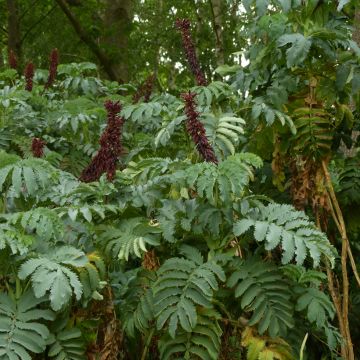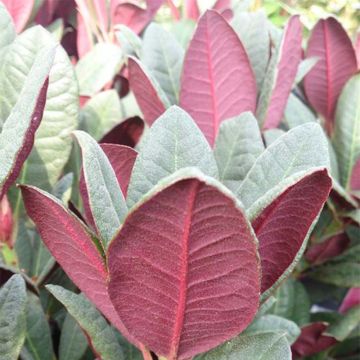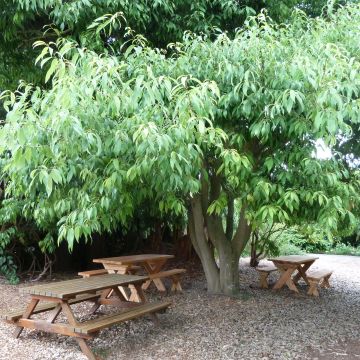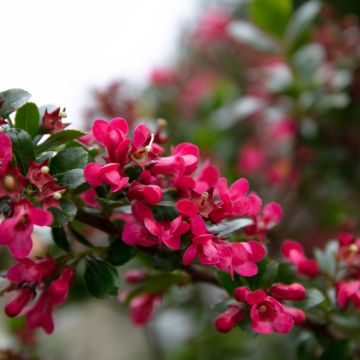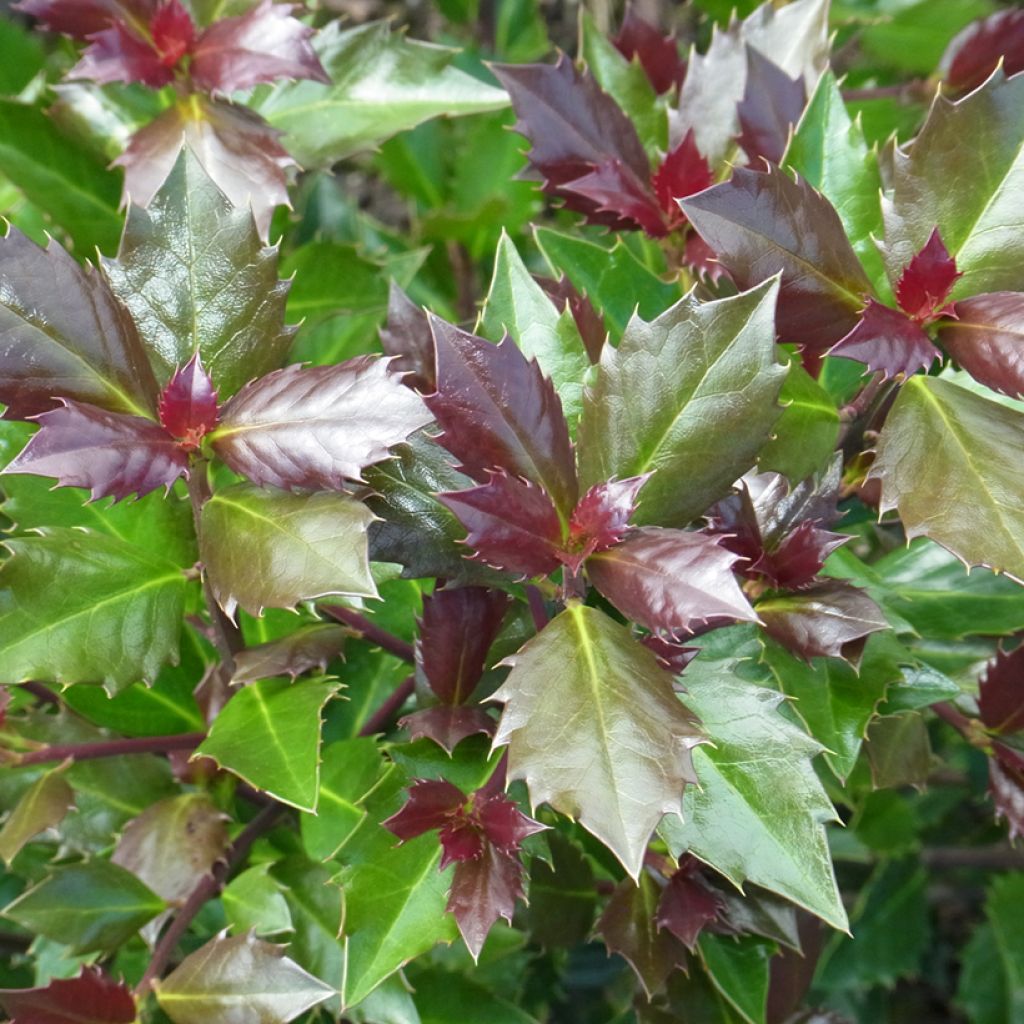

Ilex meserveae Heckenblau
Ilex meserveae Heckenblau
Ilex meserveae 'Hach1' Heckenblau®
Blue Holly, Meserve Holly, 'Hach1'
Special offer!
Receive a €20 voucher for any order over €90 (excluding delivery costs, credit notes, and plastic-free options)!
1- Add your favorite plants to your cart.
2- Once you have reached €90, confirm your order (you can even choose the delivery date!).
3- As soon as your order is shipped, you will receive an email containing your voucher code, valid for 3 months (90 days).
Your voucher is unique and can only be used once, for any order with a minimum value of €20, excluding delivery costs.
Can be combined with other current offers, non-divisible and non-refundable.
Home or relay delivery (depending on size and destination)
Schedule delivery date,
and select date in basket
This plant carries a 24 months recovery warranty
More information
We guarantee the quality of our plants for a full growing cycle, and will replace at our expense any plant that fails to recover under normal climatic and planting conditions.
Would this plant suit my garden?
Set up your Plantfit profile →
Description
The ilex meserveae 'Heckenblau' is a recent American Holly variety that stands out for its rapid growth and the beauty of its ever-changing foliage. Its young shoots are reddish-purple. Its leaves turn bluish-green in summer before colouring aubergine from October to April. This evergreen bush with an upright habit is decorative all year round. It will find its place in all gardens, as a standalone plant, in a hedge, at the back of a border, or even in a pot. This male cultivar does not bear fruit. Its small white flowers in spring can pollinate many female varieties, producing numerous red berries in winter.
From the Aquifoliaceae family, Ilex (x) meserveae is a horticultural hybrid obtained in 1964 by Kathleen Meserve in the United States through the cross-breeding of Ilex aquifolium, the common holly and its prostrate cousin Ilex rugosa. The 'Heckenblau variety has an upright and narrow bushy habit, reaching a height of 2 to 3 m and a width of 1 to 1.5 m at maturity. In April-May, it is covered with small white to pinkish-white flowers, grouped in clusters, in the leaves' axils and at the branches' tips. Its flowers will not produce fruit: it is a male cultivar. The abundance and quality of its pollen make it an excellent pollinator for female varieties such as 'Heckenfee', 'Blue Angel' or 'Blue Princess'. Its leaves are leathery, toothed, and spiny but not very prickly. This glossy foliage is highly decorative even in winter when it takes on aubergine tones. Its colour evolves throughout the seasons.
This American holly is a low-maintenance and particularly hardy plant. Whether shaped into a topiary or not, its colourful foliage will attract all eyes. With its rapid growth, it is perfect in a mixed hedge, combined with other evergreen shrubs such as the female holly 'Heckenfee', which will bear the famous red berries in winter, the 'Spirit' laurustinus (Viburnum tinus) with pinkish-white flowers from November to March, the 'Limelight' elaeagnus that brings light, or the 'Pink Marble' photinia with pink-tinted leaves.
Plant habit
Flowering
Foliage
Botanical data
Ilex
meserveae
'Hach1' Heckenblau®
Aquifoliaceae
Blue Holly, Meserve Holly, 'Hach1'
Cultivar or hybrid
Other Ilex - Holly
View all →Planting and care
Ilex x meserveaea 'Heckenblau' thrives in sun or semi-shade, sheltered from cold winds. Plant it in humus-rich soil with an acidic to neutral pH, keeping it cool even in summer. It does not like chalky soil. It then tends to chlorose: its leaves gradually turn yellow around the veins. Don't hesitate to add potting soil and compost when planting. Keep up the watering for the first three years, especially in summer if there is a prolonged drought, to help the shrub get established. If necessary, pruning should occur between late winter and early spring. In particular, cut back any too long stems to encourage branching and maintain a dense, compact growth habit. Holly leafminers, white-scale insects in spring, mites, and aphids in summer can attack Holly. If necessary, apply a preventive treatment at the start of the season.
Planting period
Intended location
Care
Planting & care advice
This item has not been reviewed yet - be the first to leave a review about it.
Similar products
Haven't found what you were looking for?
Hardiness is the lowest winter temperature a plant can endure without suffering serious damage or even dying. However, hardiness is affected by location (a sheltered area, such as a patio), protection (winter cover) and soil type (hardiness is improved by well-drained soil).

Photo Sharing Terms & Conditions
In order to encourage gardeners to interact and share their experiences, Promesse de fleurs offers various media enabling content to be uploaded onto its Site - in particular via the ‘Photo sharing’ module.
The User agrees to refrain from:
- Posting any content that is illegal, prejudicial, insulting, racist, inciteful to hatred, revisionist, contrary to public decency, that infringes on privacy or on the privacy rights of third parties, in particular the publicity rights of persons and goods, intellectual property rights, or the right to privacy.
- Submitting content on behalf of a third party;
- Impersonate the identity of a third party and/or publish any personal information about a third party;
In general, the User undertakes to refrain from any unethical behaviour.
All Content (in particular text, comments, files, images, photos, videos, creative works, etc.), which may be subject to property or intellectual property rights, image or other private rights, shall remain the property of the User, subject to the limited rights granted by the terms of the licence granted by Promesse de fleurs as stated below. Users are at liberty to publish or not to publish such Content on the Site, notably via the ‘Photo Sharing’ facility, and accept that this Content shall be made public and freely accessible, notably on the Internet.
Users further acknowledge, undertake to have ,and guarantee that they hold all necessary rights and permissions to publish such material on the Site, in particular with regard to the legislation in force pertaining to any privacy, property, intellectual property, image, or contractual rights, or rights of any other nature. By publishing such Content on the Site, Users acknowledge accepting full liability as publishers of the Content within the meaning of the law, and grant Promesse de fleurs, free of charge, an inclusive, worldwide licence for the said Content for the entire duration of its publication, including all reproduction, representation, up/downloading, displaying, performing, transmission, and storage rights.
Users also grant permission for their name to be linked to the Content and accept that this link may not always be made available.
By engaging in posting material, Users consent to their Content becoming automatically accessible on the Internet, in particular on other sites and/or blogs and/or web pages of the Promesse de fleurs site, including in particular social pages and the Promesse de fleurs catalogue.
Users may secure the removal of entrusted content free of charge by issuing a simple request via our contact form.
The flowering period indicated on our website applies to countries and regions located in USDA zone 8 (France, the United Kingdom, Ireland, the Netherlands, etc.)
It will vary according to where you live:
- In zones 9 to 10 (Italy, Spain, Greece, etc.), flowering will occur about 2 to 4 weeks earlier.
- In zones 6 to 7 (Germany, Poland, Slovenia, and lower mountainous regions), flowering will be delayed by 2 to 3 weeks.
- In zone 5 (Central Europe, Scandinavia), blooming will be delayed by 3 to 5 weeks.
In temperate climates, pruning of spring-flowering shrubs (forsythia, spireas, etc.) should be done just after flowering.
Pruning of summer-flowering shrubs (Indian Lilac, Perovskia, etc.) can be done in winter or spring.
In cold regions as well as with frost-sensitive plants, avoid pruning too early when severe frosts may still occur.
The planting period indicated on our website applies to countries and regions located in USDA zone 8 (France, United Kingdom, Ireland, Netherlands).
It will vary according to where you live:
- In Mediterranean zones (Marseille, Madrid, Milan, etc.), autumn and winter are the best planting periods.
- In continental zones (Strasbourg, Munich, Vienna, etc.), delay planting by 2 to 3 weeks in spring and bring it forward by 2 to 4 weeks in autumn.
- In mountainous regions (the Alps, Pyrenees, Carpathians, etc.), it is best to plant in late spring (May-June) or late summer (August-September).
The harvesting period indicated on our website applies to countries and regions in USDA zone 8 (France, England, Ireland, the Netherlands).
In colder areas (Scandinavia, Poland, Austria...) fruit and vegetable harvests are likely to be delayed by 3-4 weeks.
In warmer areas (Italy, Spain, Greece, etc.), harvesting will probably take place earlier, depending on weather conditions.
The sowing periods indicated on our website apply to countries and regions within USDA Zone 8 (France, UK, Ireland, Netherlands).
In colder areas (Scandinavia, Poland, Austria...), delay any outdoor sowing by 3-4 weeks, or sow under glass.
In warmer climes (Italy, Spain, Greece, etc.), bring outdoor sowing forward by a few weeks.































